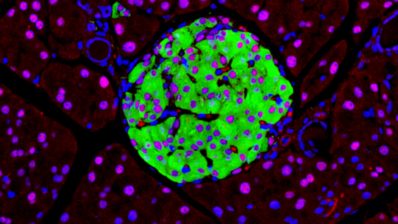The Centre for Genomic Regulation (CRG) has carried out a study in mice that suggests a new line of defence against skin cancer. The results show that the CSDE1 protein could play a key role in the suppression of tumours.
According to this research, the CSDE1 protein regulates certain molecular mechanisms related to senescence. This is a process in which the cell slows down its growth, without causing cell death. It is a defence mechanism against the threat of developing a tumour, as it slows down cell activity.
However, the CSDE1 protein not only acts to suppress tumours by activating senescence. In the study with this animal model, it has also been shown to play a key role in stopping the activity of another protein, YBX1. This protein promotes tumour growth and aggressiveness, so CSDE1, by suspending the function of YBX1, also stops tumour activity.
“The CSDE1 protein has an unpredictable duality depending on the cell type and tissue in which it is found.”
Fátima Gebauer
However, the role of CSDE1 as a defence against tumours is less clear. Like a cellular Dr Jekyll and Mr Hide, previous studies have shown some involvement of this protein in the emergence and metastasis of other tumours. Fátima Gebauer, leader of the research team, explains that “CSDE1 has an unpredictable duality depending on the type of cell and tissue in which it is found” and adds that “knowing the main cause of this phenomenon will have great implications for the discovery of new personalised cancer treatments“.
Avolio R., Inglés-Ferrándiz M., Ciocia A., Coll O., Bonnin S., Guitart T., Ribó A., Gebauer F. Coordinated post-transcriptional control of oncogene-induced senescence by UNR/CSDE1. Cell Reports, Volume 38, Issue 2, 11 January 2022, https://doi.org/10.1016/j.celrep.2021.110211







